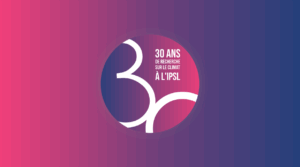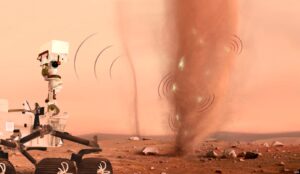Séminaire
The role of the stratospheric circulation and natural variability in a changing Earth-climate system
Mohamadou Diallo (IEK-7, FZ Jülich)
Mohamadou Diallo, IEK-7, FZ Jülich
Description
The upper troposphere and lower stratosphere (UTLS) is a key region of the Earth climate system because of a large radiative forcings’ sensitivity in that region to the variations of greenhouse gases (GHGs) such as water vapour, ozone and aerosols. The transport and distribution of these trace gases in the UTLS region are determined by the stratospheric meridional overturning circulation, known as the Brewer-Dobson circulation (BDC), and its modulation by several modes of climate variability, including the El Niño-Southern Oscillation (ENSO), the Quasi-Biennial Oscillation (QBO), volcanic aerosols and Indian Ocean Dipole (IOD).
Climate models predicted a long-term strengthening of the BDC induced by the increasing level of GHGs. Any changes in the BDC and its modulation by different modes of natural variability will lead to the UTLS composition changes of the radiatively active trace gases, including water vapour, ozone and aerosols, therefore, largely impacting on surface climate. In addition, future increases in stratospheric water vapour are predicted to amplify climate change and slow down the recovery of the ozone layer.
However, state-of-the-art climate models strongly disagree on the magnitude of these increases under global warming. The future projections of the circulation changes and the radiatively active trace gases in the UTLS region are challenged by observations. Biases and uncertainty primarily arise from the challenges inherent in modeling complex atmospheric processes leading to dehydration of tropical ascending air parcels into the stratosphere.
Despite the biases in representing complex processes and mechanisms, stratospheric aerosol geoengineering (SAG) is being studied as a potential part of the climate crisis solutions to offset the man-made climate change. These research studies are mainly driven by the concerns that reducing GHG emissions as enforced by the Paris Agreement, i.e. limiting the increase in the global mean temperature below 1.5°C and 2°C, may be insufficient to avoid significant impacts and hazards from climate change.
In this presentation, I will give a current state-of-the-Art of the BDC variability, trends and mechanism over the past decades. I will address the key role of understanding the interaction between different modes of climate variability, including QBO, ENSO, IOD, volcanic eruptions, and the related dynamical impact on UTLS composition, particularly during field campaigns like StratoClim. I will also talk about the implications of model uncertainty and biases in a context of potential climate intervention with SAG. Finally, I will show the potential use of a statistical learning approach (i.e. machine learning approach) for observationally constraining model uncertainty factors in Earth’s climate change response.
Informations supplémentaires
Sur place
ENS – salle Serre • 24, rue Lhomond 75005 PARIS
A distance
https://meet.goto.com/GeosciencesENS/s%C3%A9minaires






